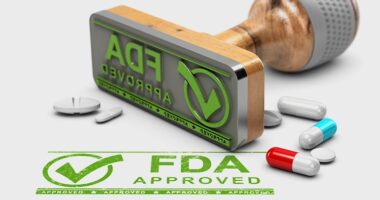Evolving Expectations of the FDA
What is the working relationship between the FDA and industry? Have expectations changed, and if so, how? A recent analysis by the PwC Health Research Institute examines how pharmaceutical company executives view the FDA in a changing healthcare environment and market.
Consumers and drug and device manufacturers are changing practices and shifting attitudes toward the US Food and Drug Administration (FDA), according to a recent analysis by the PwC Health Research Institute. Increased pressures for speedy access to breakthrough drugs and medical devices and a focus on value in addition to medical benefit are driving these changes. Those changes will likely put pressure on the FDA to consider changes as well, concludes the report.
“To meet 21st century demands for innovation, it will be important for drug and medical device manufacturers to collaborate with the FDA to consider changes to the regulatory framework,” said Mike Swanick, global pharmaceuticals and life sciences leader, in commenting on the report. “While recognizing the FDA’s investments to improve its relationships with manufacturers and speed drug and device delivery, manufacturers still want greater flexibility in product development and review.”
The report outlines how drug and device companies are adapting to what PwC calls the “new health economy,” including consumer and insurer focus on cost-effectiveness as well as medical benefit. Forty three percent of survey respondents said they are willing to have their products judged based on both clinical and economic value, compared to just 14% in 2010. Also, 78% of executives said that the FDA has improved the quality and frequency of its communications in the past two years. Seventy-six percent think that the agency provides actionable feedback, and 70% think it offered more applicable guidance, rules and regulations in the past two years. In addition, 71% believe that the FDA can accelerate approval programs by balancing swifter approval with increased post-market surveillance.
In the summer of 2014, PwC’s Health Research Institute surveyed 100 senior executives on issues such as regulations, the development of new therapies, and patient engagement. Previous surveys were conducted in 1995, 1997, 1999, 2006 and 2010. In the most recent survey, respondents included chief executive officers, chief operating officers, presidents, vice presidents, and department directors responsible for managing the company’s relationship with the FDA. Survey respondents represented a broad cross section of the pharmaceutical and life sciences industry in terms of head count, revenue, and product lines. In addition, 1,000 adult consumers were also polled about their views of the FDA, the pharmaceutical/life sciences industry, and consumer access to therapies. Consumers were US registered residents and were randomly selected to participate in an online survey.
In terms of communicating with the FDA, larger companies rely more on meetings with the FDA than smaller companies, which rely more on guidance documents. According to the PwC survey, 72% of large pharmaceutical companies use pre-new drug application meetings, and 54% of small companies do. Eighty-eight percent of large companies use end-of-Phase-IIb meetings with the FDA, and 33% of small companies do. Overall, 42% of executives from large companies said they always met with the FDA at key juncture points during clinical development or prior to submission. In contrast, only 23% of executives from small companies always participated in meetings with the FDA, and 40% said they rarely participated—a trend similar to previous surveys. Instead, 82% of small companies say that FDA guidance documents are helpful while 68% of larger companies find guidance documents helpful.
Both small and large companies expressed a similar level of satisfaction with their communication with the FDA. On compliance issues, 60% of large companies expressed satisfaction, and 58% of smaller companied did, according to the PwC report. On development issues, 60% of large companies were satisfied with their communication with the FDA, and 58% of small companies were. With respect to submissions, 60% of large companies were satisfied with their communication with the FDA, and 53% of smaller companies were.
The increased collaboration comes with increased staffing at the FDA. Increased funding through user fees helped expand the FDA’s staff between 2011 and 2015, with the largest increase seen in the Center for Drug Evaluation and Research (CDER) (36%), according to information from the US Department of Health and Human Services’ (HHS) Justification of Estimates for Appropriations Committees and provided in the PwC report. For 2015, staffing levels for CDER are estimated at 5,510 compared to 5,218 in 2014 and 4,277 in 2013. Moreover, between 2010 and 2014, industry-paid user fees accounted for a larger share of the FDA budget to review drugs compared to direct government funding. In 2014, user fees accounted for 63.8% of CDER’s funding compared to 36.2% from government funding. In 2013, user fees accounted for 57.9% of CDER’s funding, 50.0% in 2012, 49.7% in 2011, and 47.7% in 2010, according to the PwC analysis based on HHS estimates.
Despite the increased reliance on user fees to fund the FDA’s operations, the majority of executives do not think that user fees have resulted in improved review times or innovation. Only 32% of executives felt that the fees they paid have resulted in shorter review times, and only 34% think the fees help accelerate innovation, according to the PwC analysis. ” Executives are turning their focus away from user fee programs meant to simply expedite the FDA’s processes. They desire a more collaborative relationship, one marked by greater flexibility in product development and review,” according to the PwC analysis. Executives also see the need to balance innovation and risk. To improve access to new treatments, the industry is willing to consider regulatory reforms such as stricter post-market safety requirements and restrictions on promotional activities. According to the Pwc survey, 71% of survey respondents agreed that accelerated approval programs should be balanced by stricter post-market surveillance.
In evaluating future expectations, the PwC report said that the industry is warming to the idea of using economic and clinical value when deciding drug approval. According to the survey, 43% of industry respondents in 2014 approved of the use of economic and clinical value as a factor for drug approval, up substantially from 2010, when only 14% of respondents did.
Interestedly, one recent measure by the FDA to encourage innovation in drugs was relatively unknown. Only 24% of survey respondents said they were familiar with the breakthrough therapy pathway. Industry leaders were more familiar with the FDA’s expedited review programs that are well-established, such as fast-track, priority review, and accelerated approval. The breakthrough therapy designation, enacted as part of the Food and Drug Administration Safety and Innovation Act (FDASIA) in 2012, aims to provide drug sponsors with another expedited development and FDA review pathway for new, clinically urgent products. As of December 2014, the FDA had received 260 requests for breakthrough therapy designation. Of this total, it had granted 74 for review and had denied 138 requests and had not processed 48 requests. The requests for breakthrough therapy designations include supplemental applications for new indications for existing drugs as well as applications for new molecular entities (NMEs).
Nine of the 41 NMEs approved by CDER in 2014 were granted breakthrough therapy designation. These were: AbbVie’s Viekira Pak (ombitasvir, paritaprevir, and ritonavir tablets co-packaged with dasabuvir tablets) for treating chronic hepatitis C infection (genotype 1); Amgen’s Blincyto (blinatumomab) for treating patients with Philadelphia chromosome-negative precursor B-cell acute lymphoblastic leukemia (B-cell ALL), an uncommon form of ALL; Boehringer Ingelheim’s Ofev (nintedanib) and Roche’s Esbriet (pirfenidone), both for treating idiopathic pulmonary fibrosis; Bristol-Myers Squib’s Opdivo (nivolumab) for treating unresectable or metastatic melanoma; Gilead Sciences’ Zydelig (idelalisib), a drug to treat three types of blood cancer; Gilead Sciences’ Harvoni (ledipasvir and sofosbuvir), a drug to treat chronic hepatitis C virus genotype 1 infection; Novartis’ Zykadia (certinib), a drug to treat a certain type of metastatic non-small cell lung cancer; and Merck & Co,’s Keytruda (pembrolizumab) for treating metastatic melanoma.
As to healthcare consumers, the survey found that they want input into developing therapies. Relatively few (39%) believe the FDA incorporates their views in the agency’s review process, and only 38% say that drug and device manufacturers adequately consider their views. “With greater access to medical information than ever before, consumers are assuming responsibilities that have historically resided with the FDA or industry — such as developing guidance, creating incentive programs, and funding research and development directly,” said Michael Mentesana, PwC’s US pharmaceutical and life sciences research and development advisory services leader. “As a result, companies have a real opportunity to seek out and use consumer feedback to better demonstrate value over existing therapies.”






